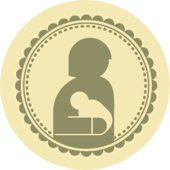There were three things that made me decide to introduce the concept of money to my first son Noe when he was slightly more than 3 year old. Firstly, Noe became really good and persistent in asking for things to buy when we take him to the shop or supermarket. He became savvier in negotiating for it “But I want, Ibu!”. Most of the time “I’ll buy it later” or “No you can’t have ‘em because you already have ‘em” doesn’t work anymore. Secondly, ever since we live in an apartment that had a TV in Jakarta, Noe couldn’t stop watching Playhouse Disney. I thought, he needed some restraint, but I don’t think punishment per se would do any good. I decided to try to treat TV as a ticketed item in the house. Thirdly, he had been in preschool for about 2 years and had been really fond of counting things. He could grasp the concept of number. So, why not give it a try and teach him about money?
I googled about “teaching money to kids” and stumbled upon a very interesting website that gives free downloadable toolkit at “Tessy and Tab” which has been recommended by other parents online. I found the toolkit includes so many things to be taught at once, so I modified the approach into a more step-by-step approach. These are the lessons which has been passed on to my son Noe, and I will add into it once I discover new lessons to be taught.
- Lesson 1: You need to work for money
- Lesson 2: Money is used to buy things
- Lesson 3: You can spend money immediately or you can use money for later
- Lesson 4: There are different prices for things
- Lesson 5: When you don’t have enough money, you can save your money until you have enough
- Lesson 6: How to read prices for things in the shop
- Lesson 7: Setting out financial goals and how to plan for it
In this posting I will talk about my process going through lesson 1 and 2.
To begin the process I prepared a few things. I thought that coins will be best to represent “money” because it has a clear physical shape and is visible when piled together. I got one transparent glass jar instead of clay piggy bank because Noe would be able to see coins adding up in the jar. I also printed out the worksheet from Tessy and Tab, which is basically a checklist of tasks and chores to be done by the kids, which includes cleaning up the toys and gathering the dirty laundry (you can freely choose whatever task s or chores you feel appropriate for your kids). It is presented in graphical format so it was quite easy to follow for the kids.
One day in December 2008, when Noe was just above 3.5 years old, we began a new routine. First I explained to him that he was at that time already a big boy, and he will be given some task that he needs to do every day. When the task was done, he would get money, which can be used for many things. Then we went through the checklist in the worksheet, such as “Have you helped gathering the dirty laundry today?” Then we count the total check list of the day and I give him the coins with corresponding amount. At that time he got three coins.
Immediately we continued to lesson 2. I show him the jar, which has three coins. I told him a story that the coins can be used to buy many things, for example, a chupa-chups lollypop would cost 2 coins while paddle pop would cost 10 coins. To give it a try, I took Noe to the convenience store in our apartment complex and buy a lollypop for 2 coins, and Noe was doing the payment for himself. He was really happy!
I also took the opportunity to install a new rule in the house, that when he wants to watch Playhouse Disney, he needed to give me one coin for every time the TV is switched on. He happily gave me his last coin to watch the TV. Then, a few hours later, he wanted to watch TV again, but I reminded him about the new rule that he needed to give me money, and at that time he didn’t have money anymore. As a result, he cried and became hysterical about it, but as parent I need to uphold the rule, which has been agreed by both me and Noe, and apply it consistently without any bargain. Because that’s the way it works in the real world too, no? If you don’t have money, well, you can’t buy certain things.
The first few days of course were a challenge, as we transitioned into applying new rule. The key is for the parents, again, to be clear with the rules, to always remind the kids about the agreed rule, and to consistently apply it without negotiation. The thing about this rule, it also needs to apply to the parents as well, so the kids would sense that it is a fair rule which both sides has the right to enforce it. If I turn on TV without paying, then Noe has the right to remind me too.
Also, this new rule about money is not about punishment or anything negative, rather, it is something to learn and give the kids a little sense of new achievements. After a few days, Noe and me had made the routine into a habit, and the rules became ingrained in both of us.
From the process Noe began to learn that money (as expressed in coin) is a thing that he needed to work for, and it is also a limited resource. Slowly he began to understand that it might be better to use the coin to watch TV later, instead of immediately spend all of them early.
As for me, the process was really exciting and amusing. It turned out that kids are really fast learner and really adaptive. They are smarter than we thought, so don’t be afraid to teach them new stuff or lessons of life.
Next time I will write about the lessons 3 and 4 based on our experience.







Astrid dan Kenny.. iya kita juga tadinya takut ada dampak itu. Tapi karena kita membatasi chores apa aja yg bisa dapet uang, Noe jg jadi terbentuk mindsetnya bahwa cashable chores adalah cuma yang ada di list tsb. Nah kalau menolong yang lain-lain scopenya kan lebih luas, jauh lebih banyak dari 4 chores yg ada di list tsb. Jadi kalau menolong atau melakukan sesuatu yang baik, ya Noe tidak mengasosiasikan dengan reward uang ya, tapi karena dia senang melihat orang lain jadi bahagia setelah ditolong. Kita juga meng-encourage Noe utk menolong, lepas dari konteks chores tsb. So far sih berjalan dengan cukup baik (mudah2an).
Thal, sama Kei pun diterapkan aturan yang sama. Efek sampingnya jadi lucu, karena Kei belum terlalu ngeh penggunaan uang itu, si Noe suka curang. "We can watch TV because Kei wants to watch TV and he has money, right Kei?" begitu trick-nya. Jadilah nonton TV pake uangnya Kei, sementara Kei nya gak ngerti. Tapi ya aku jg ngajarin utk kasih uang ke Kei juga sekali2.
raniii.. apa kabar?
ini ide baguuus! blom sempat nerapin ke aidan utk bayar tv. kalo sekarang baru nerapin gini : kalo bekal yg dibawa dari rumah bisa habis dimakan pas istirahat sekolah, maka besokannya aku kasih dia uang u/ bisa jajan makanan di kantinnya.
lumayan lah, dia jadi lebih semangat makan bekalnya dan gue juga nggak mesti keluarin duit tiap hari. tapi kalo bekal gak habis (seringnya emang ga abis) maka besoknya ya bekal lagi.. :D
cuma kadang2 gw-nya yg kurang konsisten, keburu bosen bawain dia bekal.. akhirnya kluar juga deh tu duit.. hehehe
Great article Rani, anyway klo aku pertanyaannya sama sama Astrid Felicia Lim - gimana cara mengenalkan konsep membantu tanpa harus dibayar/ tanpa pamrih agar sejalan dengan konsep 'earn' klo maua sesuatu?
Karena kebetulan sepupuku udah ngenalin konsep semacam yang diterapkan Rani ke toddlernya (5 tahun), tapi sayangnya sekarang dia cenderung jadi 'itungan'. Apa2 mesti pake bayaran hehehe puyeng juga
wah, interesting banget nih caranya... dulu gue diginiin apa bokap gue waktu udah kuliah (dapet duitnya dari angka kuliah, perlu banget, soalnya dulu gue kuliahnya jauh dari rumah, jadi duitnya dipake buat makan dan bayar tempat tinggal).
awal2nya berat juga ya untuk ngebiasainnya... btw, ran, cara ini gimana nerapinnya ke kei? apa kei dan noe bisa share untuk nonton tv?
Bagus banget nih tipsnya, akan dicatet n diterapkan nanti :)